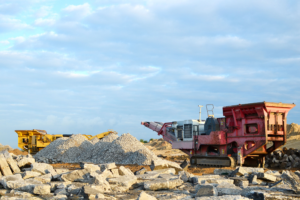Big Four Bank Stock Dividends: Which bank pays the highest?

Death, Taxes and Big Four Bank Stock Dividends…three certainties in life. Although the Big Banks’ dividends do not reach all Australians, they do impact plenty of them.
12 million super fund members received a combined $2.4bn in earnings on their CBA shares for FY23. And that does not even account for Australians who hold shares in their own right, outside their super fund. Those people received an average dividend of $3532. And of course, this does not even account for the other Big Four Banks that pay dividends.
In this article, we thought we’d look at each banks’ dividend policies to give investors an idea of what to expect if they want to invest in the Big Banks. We will do so by outlining each banks’ standard policies. Of course, there is no guarantee that an individual bank won’t decide cut or not pay dividends for one particular period. All going well, however, here is what investors may expect.
The Big Four Banks’ Dividend policies
Commonwealth Bank dividends
The Commonwealth Bank, the biggest of the big four banks, tends to pay 70-80% of its earnings. It pledges to pay dividends ‘at strong and sustainable levels’ and pay fully franked dividends.
In FY23, it paid $4.50 per share, with $2.10 of that paid out after the first half results and the balance after the second. At the date of payment, this represented a yield of 4.5%, although this figure is lower after the bank’s 13% share price spike during the December quarter of CY23.
CBA uses the July-June financial year and thus tends to pay dividends in September and March.
Westpac dividends
Westpac does not appear to have a standard dividend policy so far as a payout ratio is concerned, although it paid $1.42 per share during FY23. Dividends from Westpac tend to be fully franked. This represented a yield of 6.2%.
Westpac went so far as to not pay a dividend during the first reporting period post-pandemic (in 1HY20) and pay a dividend for the 2nd half of only 31c, representing barely 20% of FY23. In its defence, it was not only impacted by the pandemic, but regulatory scrutiny from AUSTRAC too – ultimately copping a $1.3bn fine in October of CY20.
As it uses an October-September financial year, investors tend to get paid twice yearly – in June and December.
ANZ Bank dividends
ANZ Bank‘s dividend for FY23 was 70.8% of that year’s EPS at $1.75 per share. The bank does not appear to have a standard figure, although FY23’s amount was 20% higher than FY22. It represented a 6.8% yield.
The bank uses an April-March financial year, so payments tend to be around June/July and November/December.
NAB dividends
NAB paid $1.77 per share for FY23, yielding 5.4%. As with its peers, dividends paid by the bank are 100% franked.
NAB follows Westpac in using an October-September financial year, investors tend to get paid twice yearly – in June and December.
So, of all the Big Four Bank Stock Dividends, which bank pays the highest?
You can see that CBA investors will usually receive the highest amount of cash in their bank accounts of all the Big Four Banks. This does not always mean CBA is the highest yielding – in fact, it usually is not given its higher share price. It is ANZ that has the highest dividend yield right now, at 6.8%, although there is no promise that this will remain the case.
The bottom line for investors is that the Big Four Banks are amongst the most consistent at paying dividends as well as those that pay the highest amount in cash. The Big Four Banks are not necessarily the highest yielding, however, so investors who want yield may not necessarily be able to rely on them.
What are the Best shares to invest in right now?
Check our buy/sell tips
Blog Categories
Get Our Top 5 ASX Stocks for FY26
Recent Posts
Develop Global Wins $200m OceanaGold Contract- What It Means for Investors
Develop Global (ASX: DVP) climbed 4% to A$4.36 on Friday after securing a A$200 million underground development contract with global…
Nova Minerals Drops 14% on $20m Capital Raise- Buy or Avoid?
Nova Minerals (ASX: NVA) dropped nearly 14 per cent to A$0.90 following the announcement of a US$20 million (approximately AUD…
WiseTech (ASX:WTC) Rises After Richard White Cleared of Misconduct – Should You Buy the Dip?
WiseTech Global (ASX: WTC) climbed 3 per cent to A$70.18 on Friday after founder and Executive Chairman Richard White was…



